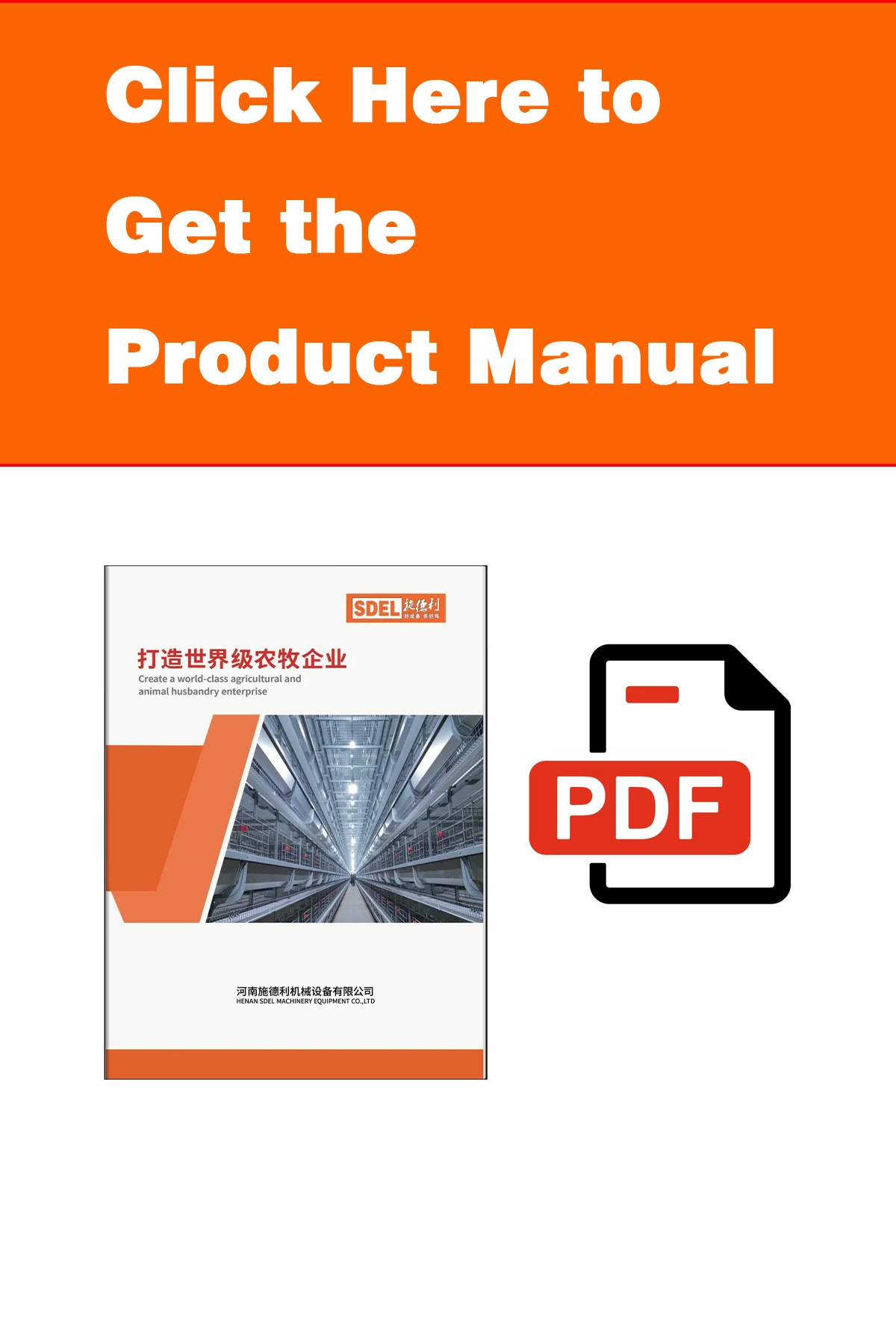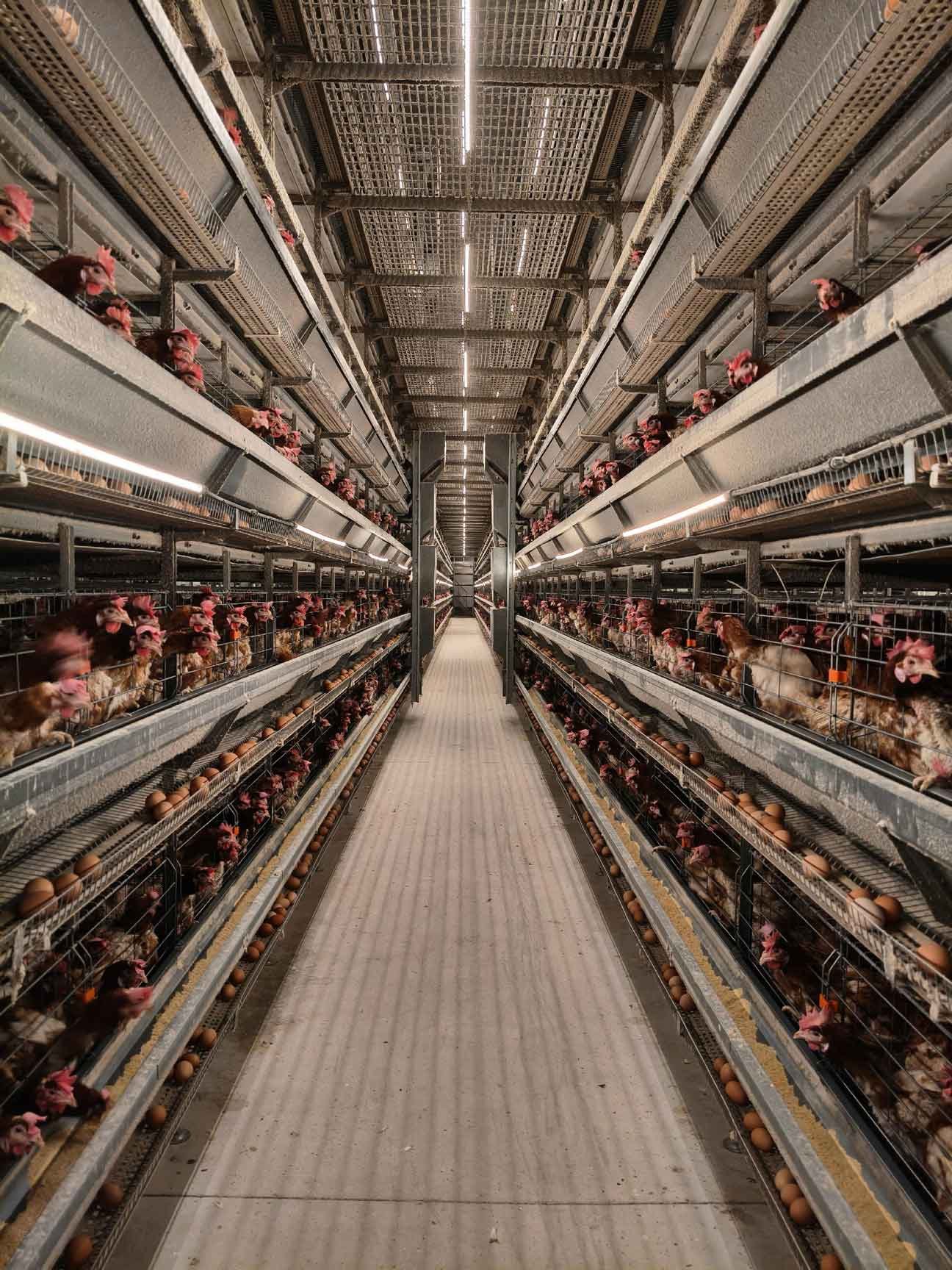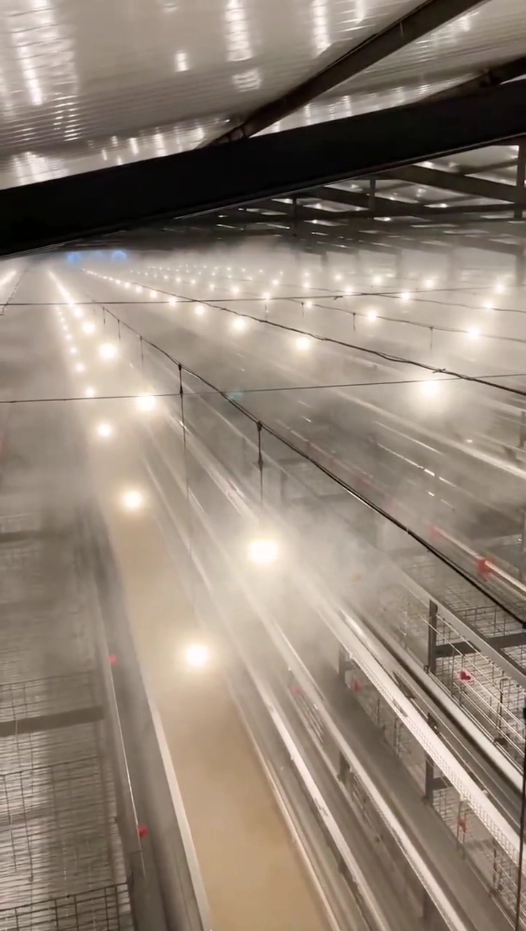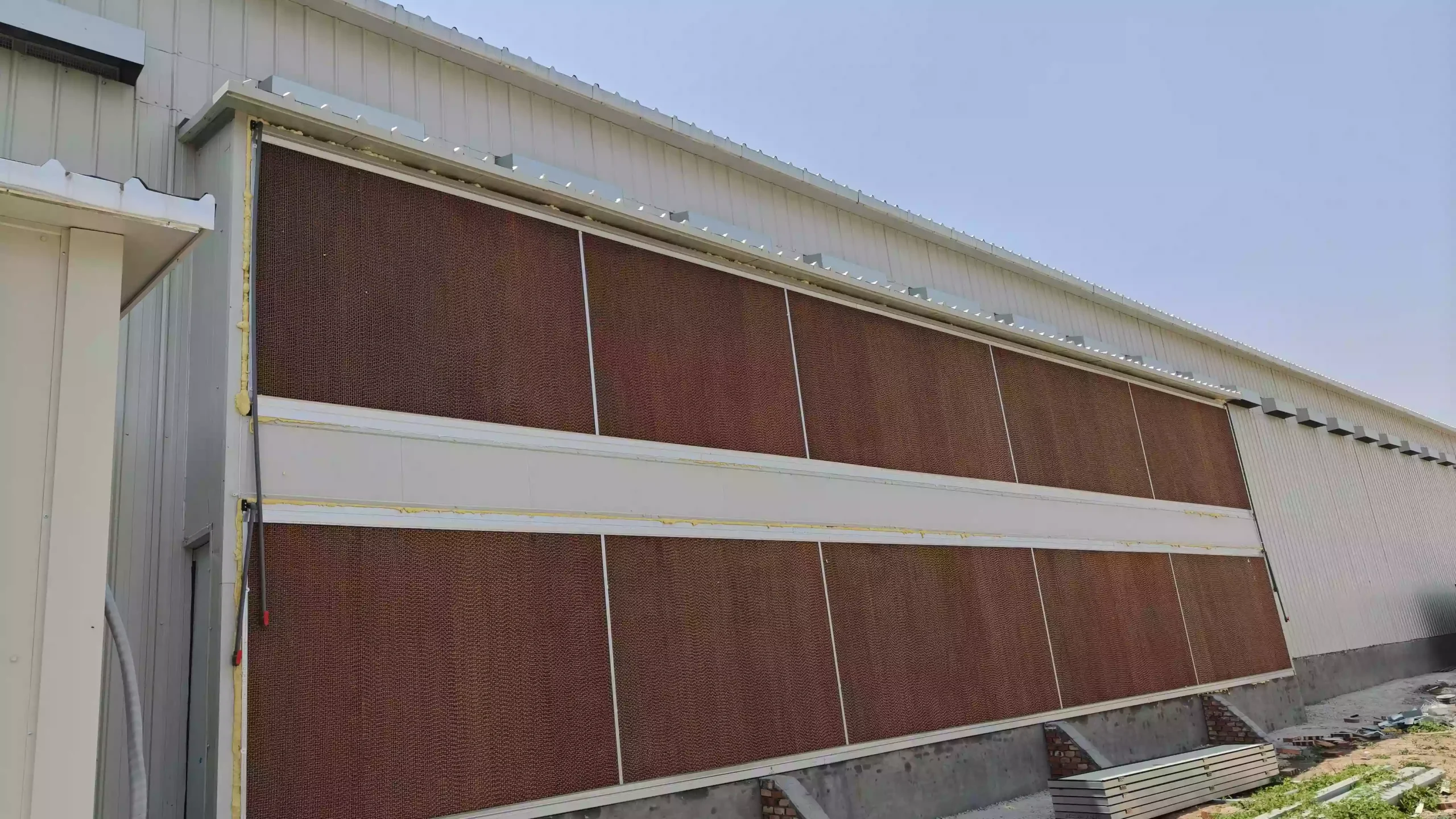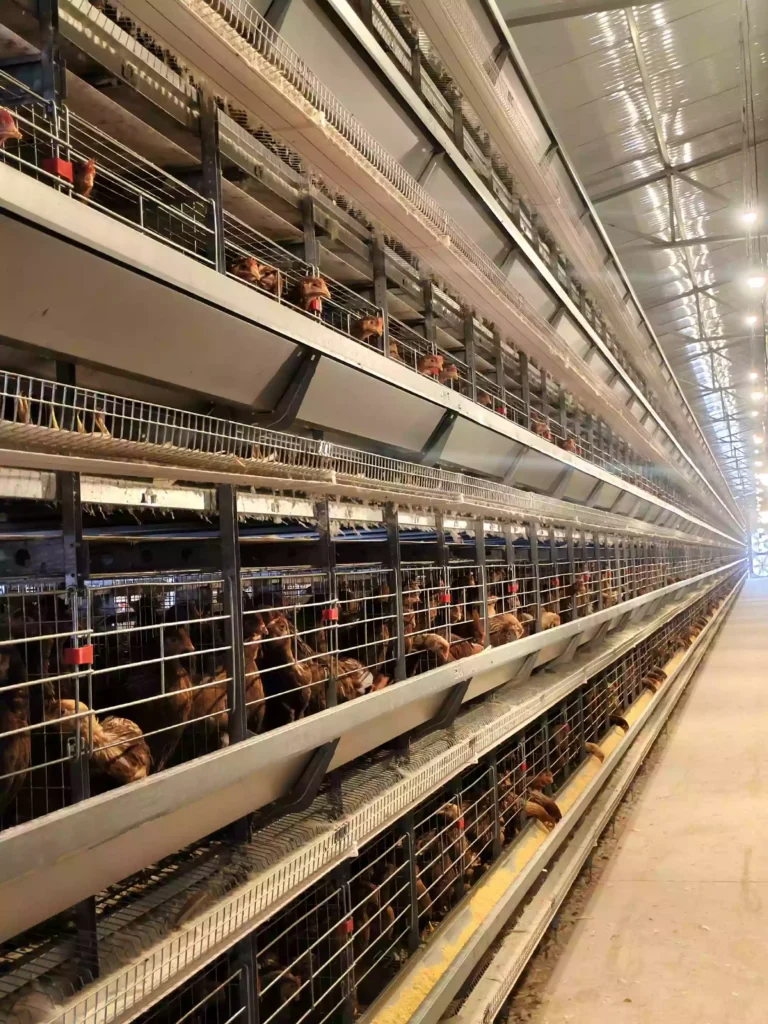
When entering the chicken house(Chicken Battery Cage), avoid disturbing the flock. You should observe all chickens evenly distributed throughout the house, with some eating, some drinking, some playing, some sleeping, and some “chatting.” Such a flock is healthy and normal. So, what are the basic points of focus at chicken battery cage when we pay attention to feeding and drinking?
I. Key Focus Points at Chicken Battery Cage for Feed Management:
- Adequate and Evenly Distributed Feeder Space: Ensure sufficient feeder access points are available and spread uniformly.
- Equipment Functionality: Check that the feed trolley and automated feeding line operate correctly and smoothly.
- Uniform Feed Distribution: The trolley must distribute feed to a consistent depth. Feeder pans must not be tilted; ensure the feed line remains straight. Secure the entire feed delivery system to prevent electrical leaks or short circuits.
- Feeder Pan Height Adjustment: Ensure pans are correctly installed. During the growing period, the height of the pan grid’s upper edge should be level with the height of the chickens’ backs.
- Avoid Feed Interruption: Do not allow feed to run out. After each feeding, check if the feed level indicator/end sensor confirms delivery is complete. Inspect for blockages in the indicator causing empty pans or overfilling (bulging).
- Post-Feeding Check: After each feed distribution, check to ensure every cage has feed. Gather excess feed from the ends of the troughs and redistribute it to prevent mold and spoilage over time.
- Daily Clean-Up: Allow chickens to completely consume all feed in the troughs or pans once daily.
- Feed Quality Check: After distributing feed, observe for any mold or spoilage. Report abnormalities to the farm manager immediately.
- Feed Quality: The farm manager or person in charge of supplies must pay special attention to the appearance of each feed delivery – including color, pellet quality, dryness/moisture, and any unusual odor. If abnormalities are found, reject the delivery and report it.
- Note: When a flock is unhealthy, the first sign is often a drop in feed consumption. Therefore, accurately record feed intake and pay close attention to daily increases or decreases!

II. Key Focus Points at Chicken Battery Cage for Water Management:
- Continuous Access: Under normal rearing conditions, do not cut off the water supply. Ensure chickens have constant access to clean water.
- Height:
- A. The water line must be perfectly straight.
- B. For days 0-2, the nipple drinker should generally be level with the chick’s eye.
- C. Adjust the height at least once every two days.
- D. When chicks drink, the angle between their back and the cage floor should be 35-45°. As birds grow, the angle for an adult drinking approaches 75-85°.
- E. The height of the nipple drinker system should allow the chicken to drink while standing on its toes.
- F. Check the water line and nipples daily to ensure there are no leaks.
- Water Flow Rate Formula: ml/minute = (Week Age * 7) + 20
- Pressure:
- A. For chicks aged 1-3 days, the water level in the pressure regulator display tube should be 5-8 cm high; for 4-14 days, 8-20 cm; for 15 days and older, 20-35 cm.
- B. In summer, appropriately increase the water level in the display tube by 3-5 cm.
- Flushing:
- A. Flush water pipes backwards (backflush) at least every two days.
- B. Flushing is mandatory after administering vaccines or medications, or when substances might interact.
- C. Flush lines individually and ensure drain pipes are clear.
- Regular Inspection: Check for abnormalities in the water line, pressure regulator, nipples, and water level tubes, such as airlocks, leaks, or blockages. Address issues immediately.
- End-of-Line Check: Check the water flow from the nipples at the end of each line every 4 hours.
- Maintenance: On days 14 and 28, remove the pressure regulator and connecting pipes for cleaning, disinfection, and reinstallation.
- Flushing Technique: When flushing lines, flush each line separately. Close all lines not being flushed to increase water pressure for effective cleaning. Continue flushing for 5 minutes after the water runs clear from the end of the line.


